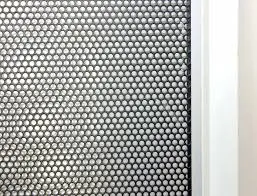-
+86 15030157877
-
sales@galvanizedmetalmesh.com
Nov . 09, 2024 01:31 Back to list
Manufacturers of Galvanized Welded Wire Mesh Panels for Diverse Applications
Exploring Galvanized Welded Wire Mesh Panel Factories A Comprehensive Overview
In the realm of industrial manufacturing, galvanized welded wire mesh panels play a crucial role across various sectors, including agriculture, construction, and security. These panels are essentially made from high-quality steel wire, which is welded at intersections to form a robust grid. The galvanization process, which involves coating the wire with zinc, offers significant protection against corrosion, extending the lifespan of the panels even in harsh environments. This article delves into the intricacies of galvanized welded wire mesh panel factories, examining their significance, manufacturing processes, quality standards, and market dynamics.
The Importance of Galvanized Welded Wire Mesh Panels
Galvanized welded wire mesh panels are renowned for their versatility and strength. They are widely used in fencing systems, animal enclosures, concrete reinforcement, and even in decorative applications. Their popularity arises from their excellent durability and resistance to rust, making them an ideal choice for outdoor applications. Additionally, the panels come in various sizes and wire thicknesses, providing flexibility to meet different client requirements.
In the agricultural sector, these panels are often used for animal pens and fencing, ensuring the safety and security of livestock. In construction, they serve as concrete reinforcement, contributing to the structural integrity of buildings and other infrastructures. The security industry also benefits from these panels as they can be used in high-security fencing systems, protecting premises from intrusions.
Manufacturing Process of Galvanized Welded Wire Mesh Panels
The manufacturing of galvanized welded wire mesh panels involves several critical steps
1. Wire Production The process begins with the production of high-quality steel wire. Quality raw materials are essential for creating strong and reliable panels.
2. Welding The steel wire is then cut into specific lengths and welded at intersecting points using advanced welding techniques. This step ensures that the panels have a uniform structure and a high tensile strength.
3. Galvanization Once welded, the panels undergo the galvanization process. This is typically achieved through either hot-dip galvanization or electro-galvanization. Hot-dip galvanization involves immersing the panels in molten zinc, providing a thicker and more durable coating. Electro-galvanization, on the other hand, uses an electrical current to deposit zinc onto the surface of the wire, resulting in a smoother finish.
galvanized welded wire mesh panel factories

4. Quality Control After galvanization, the panels go through stringent quality control checks. This includes inspecting the welds, measuring dimensions, and testing the corrosion resistance of the panels. Factories often adhere to international quality standards, such as ISO certification, ensuring consistent and high-quality output.
5. Packaging and Distribution Finally, the finished panels are packaged carefully to prevent damage during transportation and stored in warehouses before distribution to clients.
Quality Standards and Certifications
Given the vital applications of galvanized welded wire mesh panels, adhering to quality standards is paramount. Factories that manufacture these products often seek certifications such as ISO 9001, which demonstrates a commitment to quality management and continual improvement. Other relevant certifications include ASTM A392, which outlines performance criteria for welded wire fences, and EN 10223 for non-barbed wire fencing products.
Market Dynamics and Future Trends
The demand for galvanized welded wire mesh panels is influenced by various factors, including construction activities, agricultural trends, and security concerns. In recent years, there has been a notable increase in infrastructure development globally, driven by urbanization and economic growth, leading to a surge in demand for these panels.
Additionally, the rise in livestock farming is bolstering the agricultural market for welded wire mesh solutions. Security concerns related to property and infrastructure have also prompted investments in more robust fencing systems.
Looking ahead, technological advancements in manufacturing techniques and materials are expected to enhance the quality and performance of galvanized welded wire mesh panels. This includes innovations in galvanization processes, which may further improve corrosion resistance and reduce production costs.
Conclusion
Galvanized welded wire mesh panel factories are integral to producing high-quality panels that serve a multitude of industries. Their robust manufacturing processes, commitment to quality standards, and adaptability to market demands ensure that these panels remain a reliable choice for a variety of applications. As industries evolve and demand grows, the future of galvanized welded wire mesh panels appears promising, making continued innovation in this sector essential.
-
Smart AI Fence Solutions with GPT-4 Turbo | Secure & Fast
NewsAug.02,2025
-
Welded Gabion Solutions: Durable & AI-Enhanced Designs
NewsAug.01,2025
-
Premium Welded Gabion Mesh | Robust & Eco-Friendly
NewsJul.31,2025
-
Premium Eco-Friendly Roof Tiles | Affordable & Durable
NewsJul.31,2025
-
Premium Roof Tiles for Durable & Stylish Roofing Solutions
NewsJul.30,2025
-
High-Quality Roof Tiles for Durable & Stylish Roofing Solutions
NewsJul.29,2025



